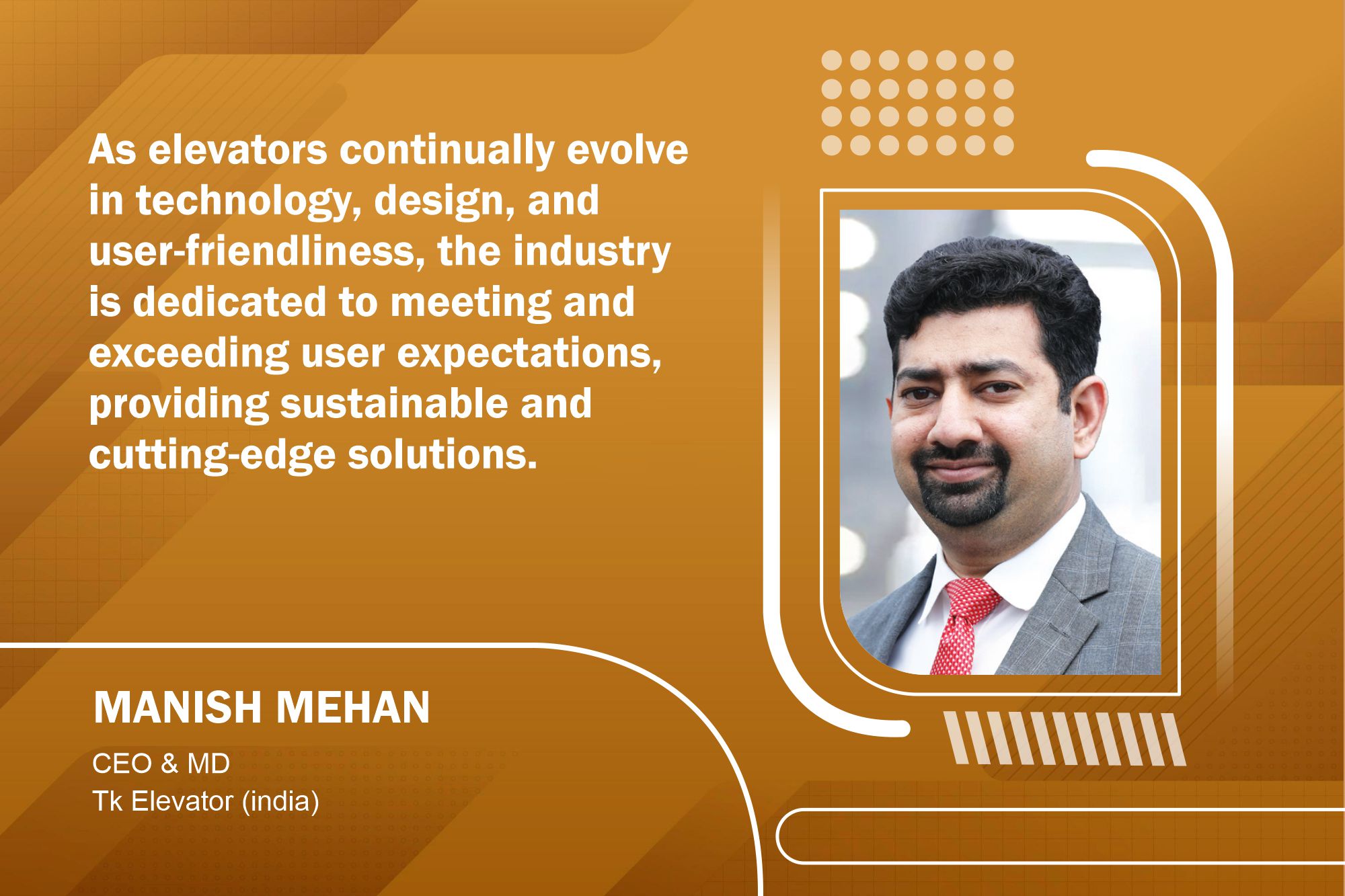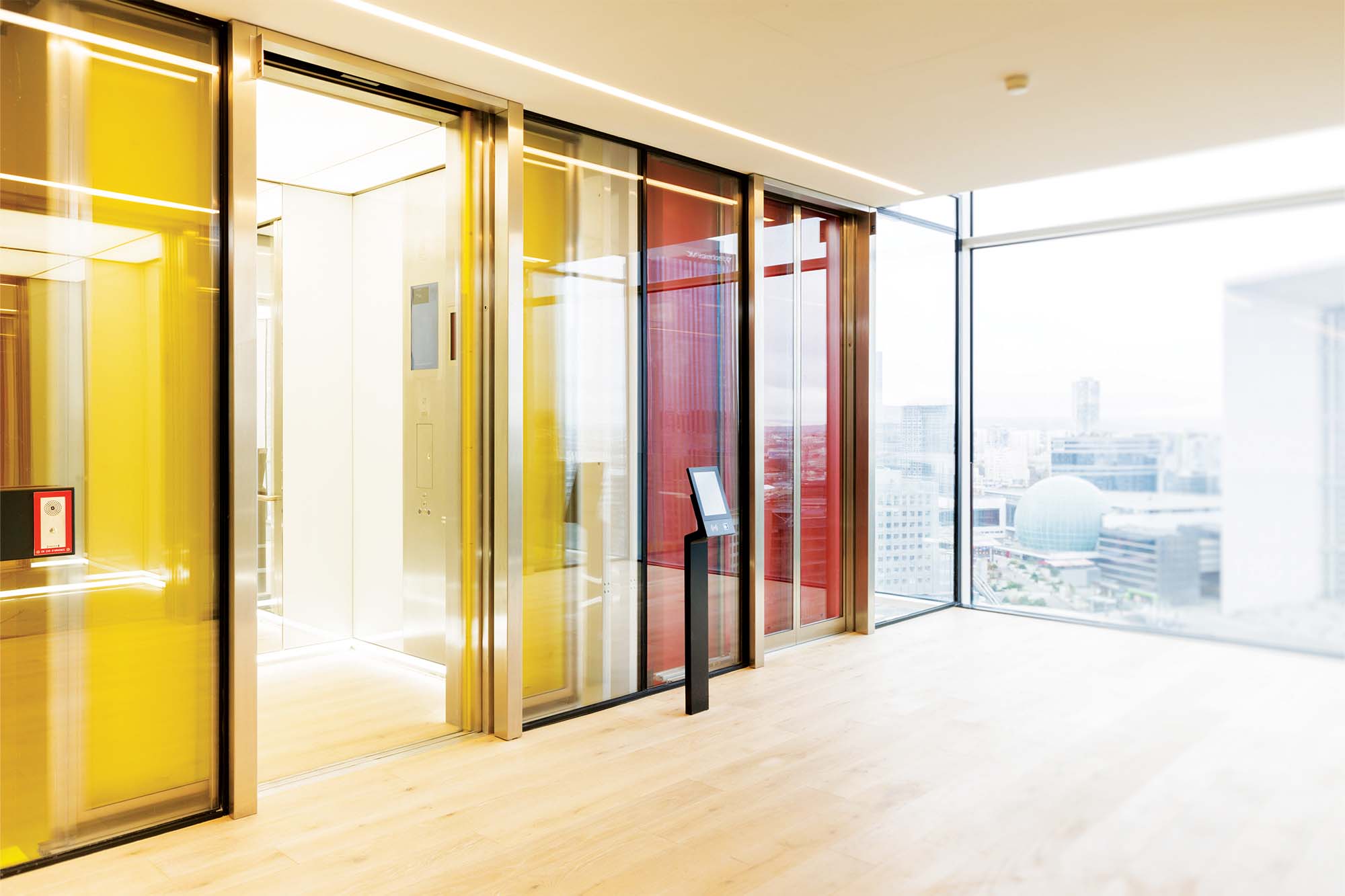The upsurge of energy-efficient elevators in India

Elevators have come a long way from a wooden box hooked by a pulley in 300 B.C. to a human-powered, counter-weighted, personal elevator built in 1743, a hydraulic crane built in 1846, to the 1st electric elevator in the 19th century.
The elevator trends have been improvising unfailingly. But what is the future, and what is the need for elevators in this regard?
The answer is “Green, energy-efficient elevators.” The elevator industry has been following the green elevator trend for a few years now. However, the trend is sure to continue for a considerable time as elevator businesses around the planet are working to build and develop new technologies and designs that are sustainable and consume less energy.
Current trends
Digital transformation in elevators has introduced significant advancements and innovations, including:
Smart elevators: These IoT-based elevators monitor performance, make real-time maintenance decisions, provide updated status reports, and allow remote control and monitoring. An example is TK Elevator’s “MAX,” a predictive maintenance solution that uses Microsoft Azure IoT technology to predict maintenance issues before they occur. This system helps elevator engineers by signalling when components need replacing before their lifecycle ends, significantly increasing elevator availability.
Machine Room-Less (MRL) Technology: MRL elevators employ a gearless traction machine located in the hoistway. This machine moves the cab without requiring a separate machine room, thereby saving space and improving efficiency.

TWIN elevator system: It features two independent cabs operating in the same shaft, managed by an intelligent group control system and equipped with a quadruple redundancy safety system. This system transports more passengers with less energy compared to conventional elevators.
AGILE Destination Selection Control (DSC): This system by TK Elevator enhances efficiency and passenger experience by reducing wait and travel times. The AGILE DSC increases passenger handling capacity by up to 30 percent, reduces travel times, and minimises crowding in lift lobbies. It also allows for more flexible elevator grouping and building design.
High-Speed elevators: These elevators can travel from the ground floor to the top floor of some of the world’s tallest buildings within minutes, significantly improving transit times.
Transit management solutions optimise travel time, making elevators more user-friendly and sustainable.
AI elevators: Artificial intelligence in elevators provides real-time insights and predictive maintenance capabilities, enhancing communication and operational efficiency.
These innovations have transformed the elevator industry, leveraging digital technologies such as data analytics, extended reality, algorithms, and detectors to improve consumer efficiency and safety.
Expectations
Studies indicate that green elevators, eco-friendly designs, and machine room-less (MRL) elevators are expanding the possibilities for growth in the elevator industry. Technologies like transit management solutions optimise travel time in buildings, making them more user-friendly, flexible, and sustainable. Smart elevators connect to users or monitors and enhance safety and convenience. MRL elevators are exceptionally energy-efficient, using up to 80 percent less energy than hydraulic lifts, and avoid the environmental hazards associated with oil-filled underground cylinders.
Additionally, regenerative elevators consume less energy and regenerate electricity, feeding it back into the building’s electrical system. Improved control features in green elevators address the discrepancy between the elevator’s weight capacity and the counterweight. The primary goal of green elevator technology is to reduce energy consumption through precise traffic control, efficient interior lighting management, and minimising other energy-consuming factors.
In the future, the elevator industry will increasingly focus on technological advancements and sustainability. The primary emphasis will be on Green Elevators, with continuous improvements to enhance sustainability and reduce energy consumption. Elevators have consistently evolved in technology, design, and user-friendliness, raising user expectations yearly. The industry is committed to meeting these anticipations by delivering innovative and eco-friendly solutions.
For more details, visit: www.tkelevator.com/in-en
16
Cookie Consent
We use cookies to personalize your experience. By continuing to visit this website you agree to our Terms & Conditions, Privacy Policy and Cookie Policy.







